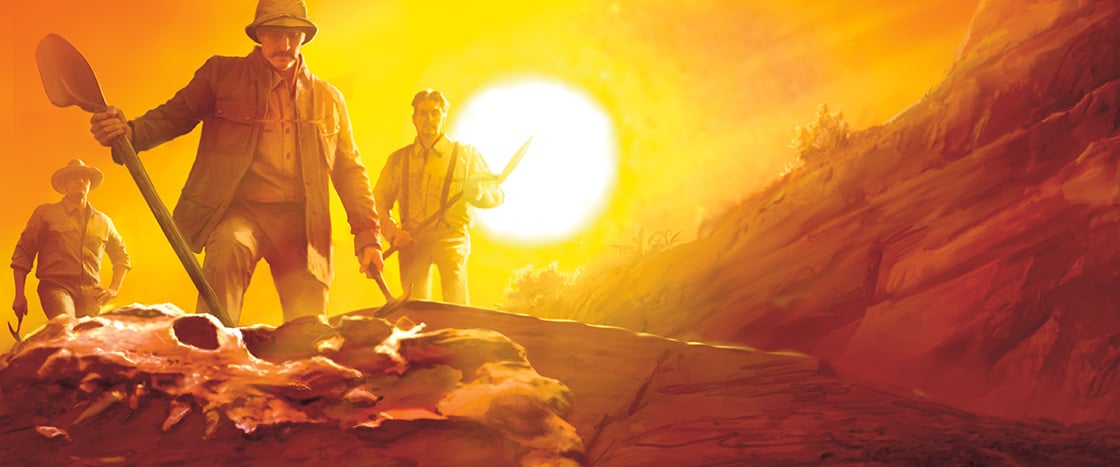Welcome to Montana, Fossil Hunter!
The year is 1908. You look out across a vast desert. Huge rocks jut out of the ground, striped with reds and browns.
The layers of rock tell a story. You’re learning how to read them. The layers contain a record of the environment dating back millions of years! Each colorful layer of stone is younger than the one below it.
Since you were a child, you’ve been hooked on tales of giant reptiles called dinosaurs. Here in the deserts of the western U.S., people have been finding their huge, fossilized bones.
But you’re here on a very specific mission.
Six years ago, fossil hunter Barnum Brown uncovered bones from an animal with a fitting name—Tyrannosaurus rex. It means “tyrant lizard king.” The teeth Brown found made one thing obvious—it was a giant meat eater!
Today Brown is searching for a big missing piece: a complete T. rex skull! You’re part of the small team tasked with finding one and digging it up.
Welcome to Montana, Fossil Hunter!
The year is 1908. You look out across a desert. Rocks jut out of the ground. They’re striped with reds and browns.
The layers of rock tell a story. You’re learning how to read them. The layers contain a record of the area. It goes back millions of years! Each layer is younger than the one below it.
You’ve always loved tales of dinosaurs. They were giant reptiles. People have been finding the dinosaurs’ fossil bones. They’ve been dug up in the deserts of the western U.S.
You’re here on a mission.
Barnum Brown is a fossil hunter. He found some bones six years ago. They belonged to a Tyrannosaurus rex. The dino’s name means “tyrant lizard king.” The teeth Brown found made one thing clear. It was a giant. And it ate meat!
Today Brown is looking for a big missing piece. He wants to find a whole T. rex skull! You’re part of a small team. Your goal is to find one and dig it up.

